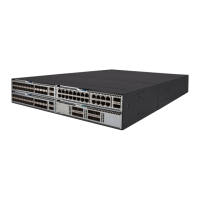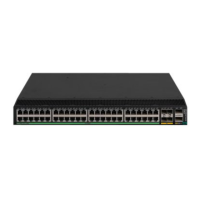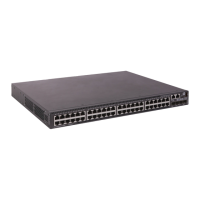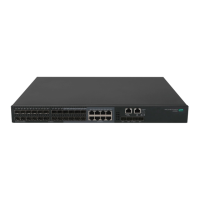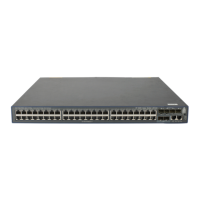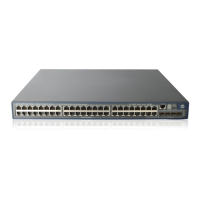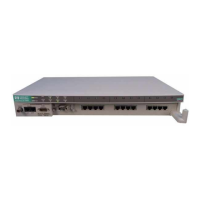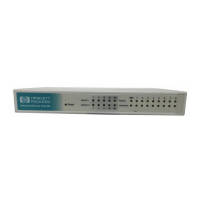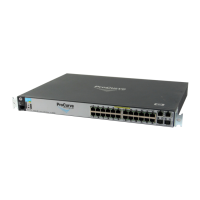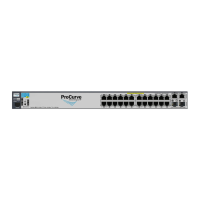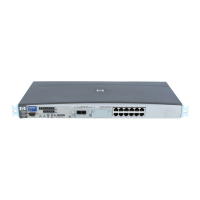218
To configure an IBGP peer group (IPv6 unicast address family):
1. Enter system view.
system-view
N/A
2. Enter BGP instance view or
BGP-VPN instance view.
• Enter BGP instance view:
bgp as-number [ instance
instance-name ]
• Enter BGP-VPN instance
view:
a. bgp as-number
[ instance
instance-name ]
b. ip vpn-instance
N/A
3. Create an IBGP peer group.
group
group-name [
internal
]
By default, no IBGP peer groups
exist.
4. Add a peer into the IBGP
peer group.
peer
ipv6-address [ prefix-length ]
group
group-name [
as-number
as-number ]
By default, no peer exists in the
peer group.
The
as-number
as-number
option must specify the local AS
number.
5. (Optional.) Configure a
description for the peer
group.
peer
group-name
description
text
By default, no description is
configured for the peer group.
6. Create the BGP IPv6 unicast
address family or BGP-VPN
IPv6 unicast address family
and enter its view.
address-family ipv6
[
unicast
]
By default, no BGP IPv6 unicast
address family or BGP-VPN IPv6
unicast address family exists.
7. Enable the router to
exchange IPv6 unicast
routing information with
peers in the specified peer
group.
peer
group-name
enable
By default, the router cannot
exchange IPv6 unicast routing
information with the peers.
To configure an IBGP peer group (IPv4 multicast address family):
1. Enter system view.
system-view
N/A
2. Enter BGP instance view.
bgp
as-number [
instance
instance-name ]
N/A
3. Create an IBGP peer group.
group
group-name [
internal
]
By default, no IBGP peer groups
exist.
4. Add an IPv4 peer into the
IBGP peer group.
peer
ipv4-address [ mask-length ]
group
group-name [
as-number
as-number ]
By default, no peer exists in the
peer group.
The
as-number
as-number
option must specify the local AS
number.
5. (Optional.) Configure a
description for the peer
group.
peer
group-name
description
text
By default, no description is
configured for the peer group.

